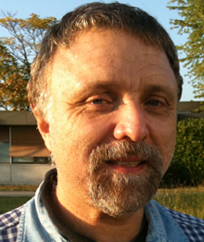Perception of stress and the mechanisms of molecular chaperones
Heat-Shock Biology and the Mechanisms of Chaperone Actions
Our research is focused on molecular chaperones, proteins that assist the (un)folding of other proteins in the cell. Many molecular chaperones are stress-induced proteins. During and following stress, such as heat-shock, they are involved in the prevention of protein misfolding and aggregation in the cell. Hence, the chaperone network provides central mechanisms for the protection and the recovery from damaged proteins in prokaryotes and eukaryotes.
We are also interested in the mechanism for perception of heat-stress in plants. Plants need to rapidly detect mild temperature increments and develop thermotolerance by establishing appropriate molecular defenses against upcoming noxious temperatures. We found strong biochemical evidence that specific plasma membrane calcium channels act as the most upstream heat-sensors in the moss Physcomitrella patens. Currently, we are studying plant genes that are involved in the initial sensing of higher temperatures.
Our long-term goal is to understand heat-shock signaling and chaperone network, in order to prevent protein misfolding and promote the active curing of toxic protein aggregates, especially in the case of protein misfolding diseases.
Recent Publications
- Forum How do humans and plants feel the heat?
Guihur, Anthony; Rebeaud, Mathieu E.; Bourgine, Baptiste; Goloubinoff, Pierre
Trends In Plant Science 10.1016/j.tplants.2022.03.006 JUL 2022 - Repair or Degrade: the Thermodynamic Dilemma of Cellular Protein Quality-Control
Fauvet, Bruno; Rebeaud, Mathieu E.; Tiwari, Satyam; De Los Rios, Paolo; Goloubinoff, Pierre
Frontiers In Molecular Biosciences, 10.3389/fmolb.2021.768888, OCT 27 2021 - On the evolution of chaperones and cochaperones and the expansion of proteomes across the Tree of Life
Rebeaud, Mathieu E.; Mallik, Saurav; Goloubinoff, Pierre; Tawfik, Dan S.
Proceedings Of The National Academy Of Sciences Of The United States Of America, 10.1073/pnas.2020885118, MAY 25 2021 - Entropic Inhibition: How the Activity of a AAA plus Machine Is Modulated by Its Substrate-Binding Domain
Iljina, Marija; Mazal, Hisham; Goloubinoff, Pierre; Riven, Inbal; Haran, Gilad
Acs Chemical Biology, 10.1021/acschembio.1c00156, APR 16 2021 - Bacterial Hsp90 Facilitates the Degradation of Aggregation-Prone Hsp70-Hsp40 Substrates
Fauvet, Bruno; Finka, Andrija; Castanie-Cornet, Marie-Pierre; Cirinesi, Anne-Marie; Genevaux, Pierre; et al.
Frontiers In Molecular Biosciences 10.3389/fmolb.2021.653073 Published: APR 15 2021 - Quantitative proteomic analysis to capture the role of heat-accumulated proteins in moss plant acquired thermotolerance
Guihur, Anthony; Fauvet, Bruno; Finka, Andrija; Quadroni, Manfredo; Goloubinoff, Pierre
Plant Cell And Environment, 10.1111/pce.13975 DEC 2020 - Moderate Fever Cycles as a Potential Mechanism to Protect the Respiratory System in COVID-19 Patients
Guihur, Anthony; Rebeaud, Mathieu E.; Fauvet, Bruno; Tiwari, Satyam; Weiss, Yoram G.; et al.
Frontiers In Medicine, 10.3389/fmed.2020.564170 SEP 11 2020 - Interdomain communication suppressing high intrinsic ATPase activity of Sse1 is essential for its co-disaggregase activity with Ssa1
Kumar, V; Peter, JJ; Sagar, A; Ray, A; Jha, MP; Rebeaud, ME; Tiwari, S; Goloubinoff, P; Ashish; Mapa, K
FEBS JOURNAL, 10.1111/febs.15045 2019 - Tunable microsecond dynamics of an allosteric switch regulate the activity of a AAA plus disaggregation machine
Mazal, H; Iljina, M; Barak, Y; Elad, N; Rosenzweig, R; Goloubinoff, P; Riven, I; Haran, G
NATURE COMMUNICATIONS, 10 10.1038/s41467-019-09476-6 MAR 29 2019 - ZnJ2 Is a Member of a Large Chaperone Family in the Chloroplast of Photosynthetic Organisms that Features a DnaJ-Like Zn-Finger Domain
Doron, L; Goloubinoff, P; Shapira, M
FRONTIERS IN MOLECULAR BIOSCIENCES, 5 10.3389/fmolb.2018.00002 FEB 15 2018 - Function, evolution, and structure of J-domain proteins
Kampinga, HH; Andreasson, C; Barducci, A; Cheetham, ME; Cyr, D; Emanuelsson, C; Genevaux, P; Gestwicki, JE; Goloubinoff, P; Huerta-Cepas, J; Kirstein, J; Liberek, K; Mayer, MP; Nagata, K; Nillegoda, NB; Pulido, P; Ramos, C; De los Rios, P; Rospert, S;
Rosenzweig, R; Sahi, C; Taipale, M; Tomiczek, B; Ushioda, R; Young, JC; Zimmermann, R; Zylicz, A; Zylicz, M; Craig, EA; Marszalek, J
CELL STRESS & CHAPERONES, 24 (1):7-15; 10.1007/s12192-018-0948-4 JAN 2019 - Emerging fields in chaperone proteins: A French workshop
Mileo, Elisabetta; Ilbert, Marianne; Barducci, Alessandro; et al.
BIOCHIMIE 151:159-165 10.1016/j.biochi.2018.06.004 AUG 2018 - Chaperones convert the energy from ATP into the nonequilibrium stabilization of native proteins
Goloubinoff, Pierre; Sassi, Alberto S.; Fauvet, Bruno; et al.
NATURE CHEMICAL BIOLOGY 14(4): 388-+ 10.1038/s41589-018-0013-8 APR 2018 - …

Prof. em. Dr. Pierre Goloubinoff
University of Lausanne
Department of Plant Molecular Biology
1015 Lausanne
Tel: +41 (0)21 692 42 32
Publications
Research topics
- Plant temperature sensing and acquired thermotolerance
- Chaperone unfolding mechanism
Interdisciplinary
- Disaggregation of toxic alpha synuclein oligomers by chaperones
